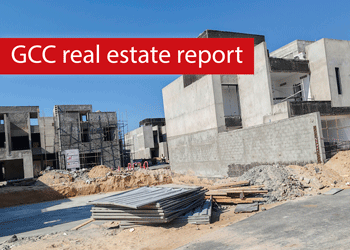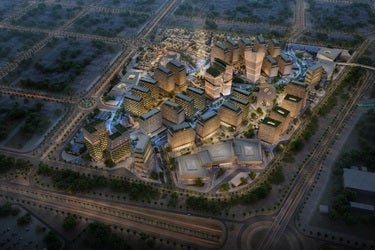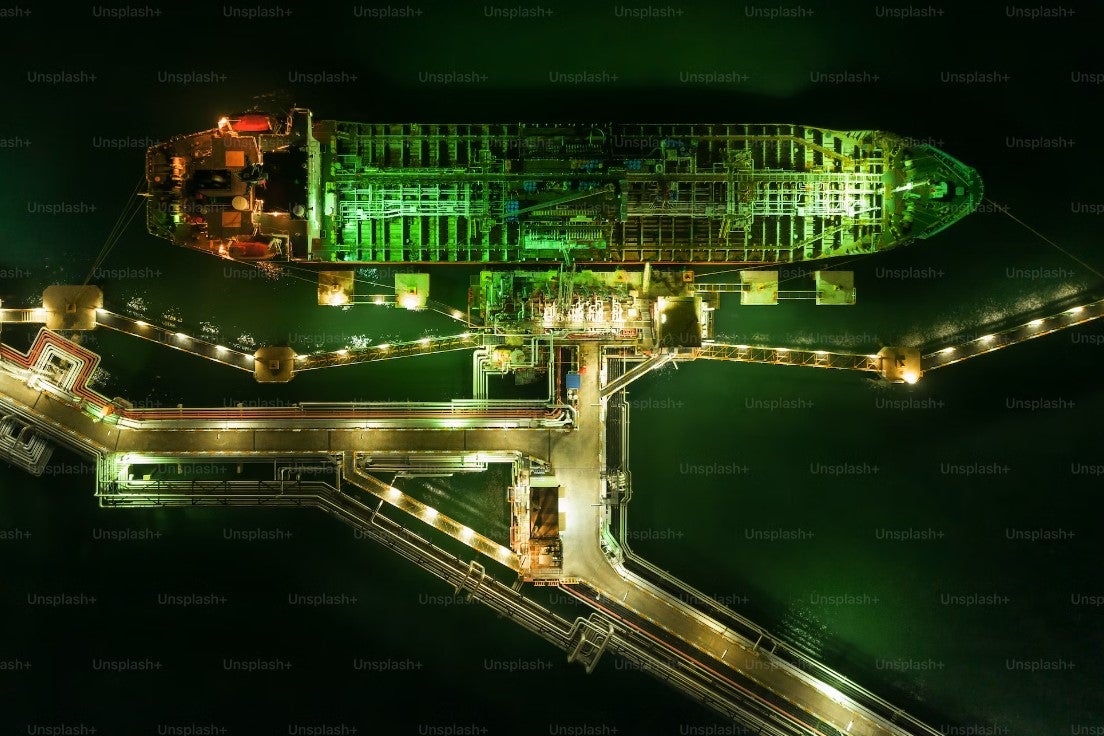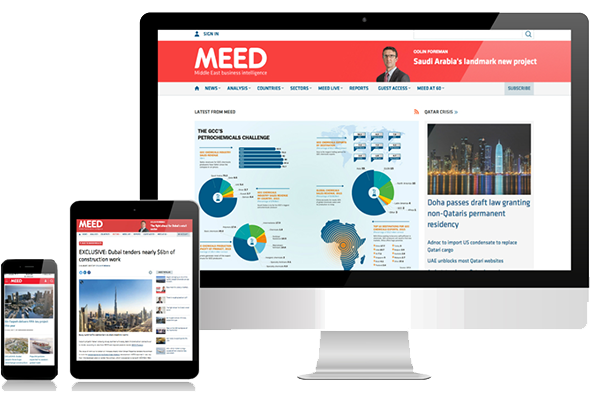Qatar’s return to economic normality
8 January 2024

Diplomacy, not economics, was the flavour of the fourth quarter for Qatar, which has become active again in the conflict resolution arena in recent months, mediating in disputes as far apart as Gaza and Venezuela.
Qatar’s efforts in November to secure a truce in the war between Israel and Hamas secured particularly favourable headlines for Prime Minister and Foreign Affairs Minister Sheikh Mohammed bin Abdulrahman bin Jassim al-Thani and Minister of State Mohammed bin Abdulaziz al-Khulaifi.
Regretfully, the humanitarian truce proved short-lived, and further efforts by Qatar, Egypt and others to forge a broader ceasefire have yet to succeed – though Doha has had successes elsewhere with its mediation efforts in recent months.
Equally important in terms of cementing Doha’s ties with Washington was Qatar’s role in securing the release of US prisoners in Venezuela on 20 December. Qatar’s involvement led to 10 American inmates being allowed to go home, in return for one Venezuelan. Al-Khulaifi said of the Venezuelan deal that it was part of a broader mediation effort to reduce tensions between the two countries.
It was certainly appreciated by Washington, with US ambassador to Doha, Timmy Davis, saying in response: “Once again, Qatar has proven itself an indispensable ally to the United States.”
The positive US sentiment towards Qatar has also been reflected in the new year by a deal between the two countries for the renewal of the US military presence at the expansive Al-Udeid Air Base for another 10 years.
More broadly, Qatar’s recently renewed wave of diplomacy efforts harks back to previous initiatives by Qatar to promote itself as a leading global mediator. From 2008-16, it worked on reducing tensions and forging peace agreements in about 10 regional and international conflicts.
These diplomatic efforts took something of a back seat as the country built itself up for the 2022 football World Cup, but it now appears that the government’s appetite for a role as an instrument of soft power has returned.
Economic heading
At the same time, it remains a pressing concern for Doha to develop a replacement anchoring economic initiative to follow in the wake of its World Cup boom. Such direction is currently lacking, and that was palpably evident when details of the state’s budget for 2024 were issued on 21 December.
Outside of the energy sector, there are only a handful of strategic projects that are continuing, such as a national cancer hospital – and nothing on the scale of the stadium and infrastructure build-out for the football tournament, which sustained the country’s non-hydrocarbons economic growth for a decade.
There are only a handful of strategic projects that are continuing – and nothing on the scale of the stadium and infrastructure build-out for the football tournament
Several more large events are scheduled to take place in the coming years, including the 2030 Asian Games, but none are likely to rival the World Cup in terms of spending or impact.
Overall, expenditure is set to reach QR200.9bn ($55.2bn) in 2024, just 1 per cent higher than the year before. Public sector salaries and wages will account for QR64bn of that total, up 2.4 per cent year-on-year. However, major capital expenditure is down 8.3 per cent.
Based on the highly conservative estimate of an average oil price of $60 a barrel in 2024, compared to $65 a barrel in 2023, Qatar’s revenues are set to decrease by 14.5 per cent to QR159bn this year. This reduction will be partly offset by an expected 2.4 per cent rise in non-oil revenues to QR43bn.
In a press conference on 21 December, Finance Minister Ali bin Ahmed al-Kuwari said that if spending remains at the projected level, the budget will produce a surplus of QR1.1bn, compared to the 2023 budget surplus estimate of QR29bn. However, Qatar also plans to pay off QR7.3bn of debt during the year, meaning the exchequer is projected to realise a deficit of QR6.2bn.
James Swanston, Middle East and North Africa economist at London-based Capital Economics, said the spending plans could yet be expanded. “Qatar’s 2024 state budget showed a slight fiscal loosening … and, if anything, officials may raise spending even further,” he said.
There is plenty of room for manoeuvre given the country’s ample gas reserves and low debts. Qatar’s public debt shrank from 58.4 per cent of GDP in 2021 to 42.5 per cent in 2022 and is expected to continue to fall to 37.4 per cent by the end of this year.
The Washington-based IMF describes the trajectory of the post-World Cup economy as one of “normalisation”. In a statement issued on 21 November following a visit to Doha, IMF mission chief Ran Bi said: “After very strong performance in 2022, economic growth has been normalising, while the medium-term outlook remains favourable.”
The IMF expects annual output to expand by about 1.75 per cent in the period 2023-25, with the non-hydrocarbons sector growing at 2.75 per cent a year. The IMF’s forecast in October was based on a more optimistic oil price of $79.9 a barrel, however.
Energy expansion
In the absence of another national project of note, Qatar has been doubling down on its investments in the expansion and development of its upstream gas infrastructure.
In May, QatarEnergy awarded the $10bn contract for the development of two new liquefied natural gas (LNG) trains at North Field South to the joint venture of France’s Technip Energies and Greece’s Consolidated Contractors Company. This built on a similarly significant $13bn contract awarded in 2021 to Japan’s Chiyoda and Technip Energies to build four LNG trains as part of the North Field expansion project.
Doha also struck a series of long-term supply deals in 2023 for the output from the expanded North Field, including three 27-year contracts signed in October alone, covering the supply of 3.5 million tonnes a year (t/y) of LNG to both TotalEnergies and Shell, and 1 million t/y to Italian major Eni. The following month, Doha signed a deal to supply a further 3 million t/y over 27 years to China Petrochemical Corporation (Sinopec).
QatarEnergy chief executive and Minister of State for Energy Affairs, Saad al-Kaabi, said in mid-December that more deals were imminent. Meanwhile, on 28 December, QatarEnergy announced a five-year crude oil supply deal with a Singapore-based subsidiary of Shell, covering up to 18 million barrels a year from January 2024. Al-Kaabi said it was his company’s first-ever five-year crude sales agreement.
There remains a ready market for the country’s natural gas, not least as the world’s energy transition fuel of choice, as a halfway step away from more polluting oil and coal. Doha nevertheless knows that it needs to find more non-hydrocarbons revenue sources. In the IMF’s November statement, Bi said the country’s plans include “accelerating revenue diversification through further mobilisation of non-hydrocarbons tax revenues”, but exactly what this means in practice has yet to be spelt out.
 MEED's February 2024 special report on Qatar includes:
MEED's February 2024 special report on Qatar includes:
> GOVERNMENT & ECONOMY: Qatar’s return to economic normality
> BANKING: Qatar’s banks adjust to new circumstances
> OIL & GAS: Qatar enters period of oil and gas consolidation
> POWER & WATER: Qatar power and water projects to take off
> CONSTRUCTION: Qatar construction enters reboot mode
Exclusive from Meed
-
 GCC real estate faces a more nuanced reality
GCC real estate faces a more nuanced reality3 July 2025
-

-

-

-

All of this is only 1% of what MEED.com has to offer
Subscribe now and unlock all the 153,671 articles on MEED.com
- All the latest news, data, and market intelligence across MENA at your fingerprints
- First-hand updates and inside information on projects, clients and competitors that matter to you
- 20 years' archive of information, data, and news for you to access at your convenience
- Strategize to succeed and minimise risks with timely analysis of current and future market trends

Related Articles
-
 GCC real estate faces a more nuanced reality
GCC real estate faces a more nuanced reality3 July 2025

The GCC real estate market in 2025-26 is characterised by dynamic growth, largely propelled by ambitious government-led diversification strategies and large-scale masterplanned projects.
Robust sales and significant development pipelines have been interpreted as indomitable market fundamentals across the region, particularly in Saudi Arabia and the UAE.
This year, a more balanced perspective has emerged that reveals new challenges as markets cope with external threats including a weakening global economy and regional geopolitical tensions, combined with domestic challenges such as oversupply and affordability.
Concerns about potential oversupply in certain residential and retail segments, especially in Dubai and Riyadh, are notable, with ratings agencies such as Fitch forecasting price corrections.
With so many real estate projects planned in the GCC region, the construction sector is poised for continued expansion, yet concerns are growing over delivery as capacity is constrained and contractors are becoming increasingly risk averse as their orderbooks fill.
Balancing population growth with project pipelines and the delivery of national visions will be critical in shaping the market’s performance in the future.
Investors and developers will need to navigate these complexities if they are to continue enjoying the success they have achieved in the past four years.
Bahrain
Bahrain’s real estate sector performed steadily in 2024, led by the residential market, which benefitted from demographic growth, improved affordability and supportive government initiatives.
Updated immigration policies such as the introduction of a Golden Visa programme have encouraged more expatriates to purchase properties, which has been stimulating demand.
The price of high-end apartments increased modestly year-on-year, with an increase of 1.4% in 2024, while villa prices remained stable, indicating strengthening demand for premium properties with modern amenities, according to real estate services company Savills.
There was an even greater increase in rental values, which rose by 23% across Bahrain in 2024, with the Capital Governorate accounting for 48% of rental transactions, Savills says.
The country’s commercial office market faced challenges in 2024, however, with limited demand and relatively flat rental growth, despite new developments such as SayaCorp Tower entering the market, Savills reports.
Conversely, Bahrain’s retail sector showed signs of recovery last year, driven by luxury brands opening new stores in Marassi Galleria, increasing foot traffic and demand.
For industrial space, larger warehouses saw a slight increase in rental rates, with a 2.1% year-on-year growth, while rates for smaller units remained stable, Savills says. This sector remains integral to Bahrain’s economic diversification strategy, with further infrastructure investments expected to support demand.
Kuwait
 Kuwait’s residential prices have softened over the past year. Overall residential sales in the first quarter of 2025 declined by 24% quarter-on-quarter, marking the weakest growth since Q2 2024, but only dipped by 2% year-on-year despite an 11.7% rise in transactions, potentially indicating a shift towards smaller or lower-value units in outer areas, according to National Bank of Kuwait (NBK).
Kuwait’s residential prices have softened over the past year. Overall residential sales in the first quarter of 2025 declined by 24% quarter-on-quarter, marking the weakest growth since Q2 2024, but only dipped by 2% year-on-year despite an 11.7% rise in transactions, potentially indicating a shift towards smaller or lower-value units in outer areas, according to National Bank of Kuwait (NBK). The residential price index remained negative, falling by 1.7% year-on-year in its eighth consecutive quarterly decline, although at a slower pace, suggesting abatement of downward pressure, NBK says.
The slowdown in residential sales in Q1 2025 indicates potential market sensitivity to seasonal factors and a normalisation from strong previous levels.
The fiscal deficit for 2025 is expected to be -4.2% of GDP, up from -3.1% in 2024 on the back of declining oil revenue due to lower prices.
Fiscal pressures could impact government spending on projects if oil prices remain low or decline even further.
Oman
Oman’s real estate sector is experiencing steady growth, supported by the country’s broader economic expansion.
The residential market has registered a 3.6% increase in supply, adding about 38,400 new units in 2024.
Despite the increase, occupancy rates remained stable at 85.2%, with villas and houses experiencing higher demand. The growth in residential supply is essential to meet the projected housing demand gap by 2035, which underscores the need for proactive planning to avoid potential shortfalls.
Oman’s tourism sector has also contributed positively to the real estate market, with guest arrivals at three- to five-star hotels up 3.6%, leading to a 6.1% rise in revenue. Hotel occupancy rates improved to 53.5%, indicating a gradual recovery in demand.
Looking ahead, Oman’s real estate sector is expected to benefit from government initiatives under Vision 2040, which aims to attract investment and foster economic diversification. Anticipated population and workforce growth will drive demand for housing and commercial properties.
Challenges such as market dynamics and potential delays in project completions will require careful management. Overall, the outlook for Oman’s real estate sector remains stable, with opportunities for strong growth in both residential and tourism-
related developments.
Qatar
 Qatar’s real estate market has continued to adapt to evolving demand patterns and macroeconomic conditions, according to real estate consultancy Knight Frank. While some sectors showed resilience, overall trends point to a period of moderation across the residential, commercial and retail segments.
Qatar’s real estate market has continued to adapt to evolving demand patterns and macroeconomic conditions, according to real estate consultancy Knight Frank. While some sectors showed resilience, overall trends point to a period of moderation across the residential, commercial and retail segments.In the residential sales market, average villa and apartment prices declined by 5% year-on-year. Despite the fall, demand for homes in locations such as Pearl Island and West Bay Lagoon remains stable. Abu Hamour recorded the highest average villa sale price at QR8,587 ($2,359) a square metre (sq m), while the Waterfront led the apartment segment at QR14,300/sq m.
Mortgage activity rose sharply, with a 168% year-on-year increase in Q4 2024, partly attributed to declining interest rates.
Rental rates in the villa segment dropped by 2.6% in 2024, averaging QR15,875 a month, although premium areas such as West Bay Lagoon continued to command higher rents. The apartment rental market remained relatively stable, with luxury developments such as Pearl Island seeing sustained demand and rents for three-bed properties averaging QR15,721 a month.
In the office market, Grade A rents dipped by 2.3%, settling at QR90/sq m. Prime areas like West Bay and Marina District remain in demand, although vacancy rates in secondary locations are contributing to downward rental pressure.
Retail rents declined by 1.5% amid increasing supply and shifting consumer behaviour. Lifestyle and experiential retail developments outperformed, while secondary malls faced growing competition.
E-commerce also continued to gain ground, with online sales surging 32% year-on-year in December 2024.
The outlook for Qatar’s real estate market will depend on the pace of economic diversification … and broader regional stability
Qatar’s hospitality sector saw marked improvements, supported by a 25% rise in tourist arrivals in 2024. Key performance indicators, including occupancy rates and revenue per available room, recorded double-digit growth, reflecting the country’s appeal as a leisure and business destination.
The outlook for Qatar’s real estate market will depend on the pace of economic diversification, infrastructure investment and broader regional stability. While high-end residential and hospitality sectors appear well positioned, other segments may find the outlook more challenging.
Saudi Arabia
 Saudi Arabia’s real estate market has displayed a mixed performance across all sectors, with momentum in residential and tourism-led hospitality markets counterbalanced by slower activity in the office and retail segments, according to real estate agency CBRE’s latest market review.
Saudi Arabia’s real estate market has displayed a mixed performance across all sectors, with momentum in residential and tourism-led hospitality markets counterbalanced by slower activity in the office and retail segments, according to real estate agency CBRE’s latest market review.In Riyadh, residential sales remained resilient, underpinned by population growth, ongoing reforms and increased demand from Saudi nationals and expatriates. Despite high mortgage rates, key developments such as Diriyah and King Salman Park continue to attract investor attention.
Demand in Jeddah is more subdued, with price growth stabilising after recent surges. Supply constraints and the government’s focus on increasing home ownership to 70% by 2030 remain influential drivers.
The hospitality sector showed significant growth, particularly in the religious and leisure tourism segments. Strong visitor numbers to Mecca and Madina supported high hotel occupancy rates, while developments in Al-Ula and the Red Sea contributed to the expansion of the kingdom’s tourism offering.
Saudi Arabia recorded a surge in international tourist arrivals, reflecting its broader push to diversify the economy through the Vision 2030 strategy. Major global hotel brands continued to announce new projects, signalling long-term confidence in the sector’s prospects.
The office market remained relatively stable, although demand patterns are evolving. In Riyadh, Grade A office spaces remained in demand amid limited supply, while older or lower-grade buildings experienced elevated vacancy levels.
In Jeddah and Dammam, activity was more modest, with tenants preferring flexible leasing arrangements. CBRE notes that public sector activity and government-backed gigaprojects continue to play a significant role in driving office demand.
Retail sector performance varied, with experiential and lifestyle-focused retail formats gaining traction, while traditional malls faced ongoing pressure from e-commerce growth and shifting consumer behaviours. Developments in Riyadh and Jeddah reflect a broader industry shift towards mixed-use destinations with entertainment and leisure at the core.
Looking ahead, Saudi Arabia’s real estate outlook remains cautiously optimistic. Continued progress on gigaprojects such as Neom, Qiddiya and the Red Sea developments are expected to support long-term demand across several asset classes.
However, affordability challenges, financing constraints and evolving global economic conditions could temper short-term momentum.
UAE
 After four strong years, Dubai’s residential market has shown signs of plateauing in 2025.
After four strong years, Dubai’s residential market has shown signs of plateauing in 2025. The market recorded more than 42,000 sales transactions in the first quarter of this year, reflecting a 10% quarterly decline due to fewer new project launches and seasonal factors, according to property consultant Cavendish Maxwell.
At the same time, year-on-year performance remained strong, with transaction volumes rising by 23.1% and total sales value reaching AED114.4bn ($31bn), a 29.6% increase.
Residential rents increased by 1% quarter-on-quarter and 14.4% year-on-year in Q1 2025, marking the slowest quarterly rise in two years. Gross rental yields averaged 7.3% for apartments and 5% for villas and townhouses in March 2025.
In May, Fitch Ratings forecast a residential price correction in Dubai, starting in H2 2025 into 2026, driven by a record increase in new supply. This is a direct cause-and-effect relationship, where past sales, leading to new projects, are now translating into future supply, which will likely dampen price growth.
Fitch Ratings forecasts a residential price correction in Dubai starting in H2 2025 into 2026, driven by a record increase in new supply
Residential prices surged approximately 60% between 2022 and Q1 2025. Simultaneously, a record number of new property projects were initiated in 2023-24, with a peak delivery of 120,000 units expected
in 2026.Fitch says that this average 16% increase in supply in 2025-27 will exceed the forecast population growth of about 5%. This imbalance is the direct cause of the predicted 15% fall in residential property prices.
Rental yields are already showing pressure. While a correction is anticipated, Fitch also notes that UAE banks and developers are well-equipped to handle the downturn due to improved leverage and capital buffers. This suggests that the market is maturing, and stakeholders have learnt from previous cycles, potentially leading to a moderate correction rather than a significant crash.
https://image.digitalinsightresearch.in/uploads/NewsArticle/14187809/main.gif -
 Iraq to start procurement for $1bn rail modernisation
Iraq to start procurement for $1bn rail modernisation2 July 2025

Iraq’s Ministry of Transport and its General Company for Railways division will soon start procurement for a $1bn-plus modernisation programme of its north-south main rail line.
Known as the Iraq Railways Extension & Modernisation (IREM) project, the scheme comprises the rehabilitation, upgrade and modernisation of 1,047 kilometres (km) of existing single-line track linking Umm Qasr Port in the south with Mosul in the north, running through Basra and Baghdad.
There will be two main construction packages. The first contract, expected to be tendered in October, covers:
- Renewal of 32km of track between Al-Yussifia and Baghdad, totalling 32km, with an estimated cost of $33m
- Renewal of 20km of track between Baghdad and Taji, totalling 20km, with an estimated cost of $21m
- Renewal of the line between Baiji and Mosul, totalling 189km, with an estimated cost of $197m
The second deal involves the largest element of the programme: an estimated $570m deal to install European Train Control System (ETCS) signalling and ducts for optical fibre along the entirety of the line, including a safety level-crossing protection system for all official crossings along the alignment, and the modernisation of selected train stations.
The package will also include the:
- Spot rehabilitation of the 72km-long Umm Qasr-Basr line, with an estimated cost of $4m
- Spot rehabilitation of the 520km-long section between Basra and Baghdad, with an estimated cost of $32m
Requests for proposals for this second deal are due to be issued in January 2026.
Before then, the client is expected to tender an estimated $15m contract for the capex management role on the scheme this month.
Iraq’s rail sector consists of a 2,272km standard gauge network with 115 stations, most of which are in poor condition and provide only limited transport options.
The system features two main routes: the north-south line and an east-west line running from Baghdad to near the Syrian border.
There are also several short branch lines. Service is limited, with a few freight trains carrying oil and grain, as well as passenger services, including an overnight Baghdad–Basra train and a weekly train to Samarra.
The southern section of the north-south line was partly restored in 2014, allowing trains to run up to 80km an hour (km/h) with a 25-tonne axle load.
The northern segment, from Baghdad to Rabiaa and linking to Syria, operates at 40-60 km/h with an axle load limit of 18-20 tonnes. This section sees limited and irregular freight movement and contains a major workshop at Baiji that will be refurbished under the programme at an estimated cost of $10m.
The modernised railway line is expected to carry 6.3 million tonnes of domestic freight, 1.1 million tonnes of exports and imports, and 2.85 million passengers by 2037.
The IREM project is a central component of Iraq’s Development Road (IDR) Initiative, which aims to position Iraq as a regional transportation hub linking the GCC states with Turkey and then Europe. In the long run, the network is hoped to connect with the planned GCC railway in Kuwait.
The launch of the project follows confirmation from the World Bank of a loan agreement worth $930m to fund almost all of the project.
Prior to the extension of the loan, Italy’s BTP Infrastrutture carried out the initial feasibility study and preliminary design work.
The firm is also conducting a similar contract covering a new multibillion-dollar 1,700km high-speed railway between Al-Faw on the Gulf coast and Fishkabour on the Syrian border, along with a major highway along the same alignment.
It has also been engaged on the design of the Al-Faw Grand Port project.
https://image.digitalinsightresearch.in/uploads/NewsArticle/14187478/main.gif -
 Hong Kong firm reveals $3bn Riyadh tech district design
Hong Kong firm reveals $3bn Riyadh tech district design2 July 2025
Register for MEED’s 14-day trial access
Hong Kong-headquartered architectural firm LWK & Partners has released details about the estimated SR12bn ($3.2bn) Pulse Wadi project, an upcoming technology and cybersecurity district located on the outskirts of Riyadh.
The project will span an area of over 600,000 square metres (sq m) with a gross floor area of about 1.14 million sq m.
In an official statement, the firm said that the project will be anchored by a government complex, two iconic headquarters, several cultural institutions and a dynamic cyber-research district.
At the centre of the district lies the central wadi plaza, which will be an events space.
LWK & Partners is the project’s lead design consultant, master planner, urban designer, design architect and landscape architect.
According to UK data analytics firm GlobalData, the construction industry in Saudi Arabia is expected to grow by 4.4% in real terms in 2025, supported by investments in the housing, energy, industrial and transport infrastructure sectors, coupled with investments in preparation for football’s Fifa World Cup 2034.
In November last year, the government approved the kingdom’s 2025 budget, which includes a total expenditure of SR1.3tn ($342.7bn) for this year.
The commercial construction sector is expected to grow by 3.7% in real terms in 2025, before registering an annual average growth rate of 3.7% in 2026-29, supported by investments in leisure and hospitality, retail, data centres and sports infrastructure projects.
https://image.digitalinsightresearch.in/uploads/NewsArticle/14187435/main.jpg -
 Indian contractor wins Ruwais LNG jetty construction
Indian contractor wins Ruwais LNG jetty construction2 July 2025
Register for MEED’s 14-day trial access
India-based ITD Cementation India has announced winning a contract worth $67.7m for jetty construction work on Abu Dhabi National Oil Company’s (Adnoc) upcoming liquefied natural gas (LNG) processing terminal at Ruwais in Abu Dhabi.
The job is understood to have been awarded by a consortium of France’s Technip Energies, Japan-based JGC Corporation and Abu Dhabi-owned NMDC Energy, the main contractors performing engineering, procurement and construction (EPC) works on the $5.5bn project.
Prior to awarding this sub-contract to ITD Cementation India, the consortium of Technip Energies, JGC Corporation and NMDC Energy awarded Abu Dhabi-based Dutch Foundations a contract to perform piling works on the Ruwais LNG project.
Also, in January, US-based midstream energy and storage services provider Chicago Bridge & Iron (CB&I) won an order from the main EPC consortium to supply two cryogenic tanks for the Ruwais LNG project. CB&I described the contract as “substantial”, a term it uses to denote values between $250m and $500m.
Ruwais LNG terminal project
The upcoming LNG export terminal in Ruwais will have the capacity to produce about 9.6 million tonnes a year (t/y) of LNG from two processing trains, each with a capacity of 4.8 million t/y. When the project is commissioned, Adnoc’s LNG production capacity will more than double to about 15 million t/y.
Adnoc awarded the full EPC contract to the consortium of Technip Energies, JGC Corporation and NMDC Energy, and achieved the final investment decision for the Ruwais LNG terminal complex in June last year.
The complex will also feature process units, storage tanks and an export jetty for loading cargoes and LNG bunkering, as well as utilities, flare handling systems and associated buildings.
The planned LNG facility will run on electric-powered rotary equipment and compressors instead of gas-fired units. Adnoc awarded a $400m contract in October 2023 to US-based Baker Hughes for the supply of all-electric compression systems for the project. The LNG trains will run on energy-efficient Baker Hughes technology, including compressors driven by 75MW electric motors.
Separately, Adnoc has also signed agreements with international energy companies to divest a total stake of 40% in the Ruwais LNG project.
UK energy producer BP, Japan's Mitsui & Co, London-headquartered Shell and French energy producer TotalEnergies will each hold 10% stakes in the Ruwais LNG terminal project, with Adnoc retaining the majority 60% stake in the facility.
Adnoc Group subsidiary Adnoc Gas will acquire its parent company’s 60% stake in the Ruwais LNG facility at cost in the second half of 2028, when first production from the complex is due.
ALSO READ: Adnoc to supply LNG to Mitsui from Ruwais project
https://image.digitalinsightresearch.in/uploads/NewsArticle/14186135/main.jpg -
 Firm wins $27m Dubai Ras Al-Khor wildlife sanctuary work
Firm wins $27m Dubai Ras Al-Khor wildlife sanctuary work2 July 2025

Austrian firm Waagner Biro, part of French engineering group Egis, has won a AED100m ($27m) contract for the first phase of the Ras Al-Khor wildlife sanctuary development project in Dubai.
Dubai Municipality awarded the contract.
The project’s first phase covers an area of over 6.4 square kilometres (sq km) and is expected to be completed by 2026.
The scope involves rehabilitating mangrove habitats and increasing mangrove coverage from 40 hectares to 65 hectares. This includes adding new irrigation channels, rehabilitating mangrove forests, creating new habitats such as the mangrove lake, north edge lake and reed ponds, and adding a green spine.
According to an official statement, the first phase also involves increasing the water bodies by 144%, expanding their total area to 74 hectares. Additionally, 10 hectares of mudflats will be added.
Dubai Municipality awards contract for first phase of AED650 million Ras Al Khor Wildlife Sanctuary Development Project. The initial phase of the project is expected to be completed by the end of 2026. The project is expected to multiply the number of visitors to the sanctuary… pic.twitter.com/iVsg5Qqq0p
— Dubai Media Office (@DXBMediaOffice) June 30, 2025
Ras Al-Khor Wildlife Sanctuary was established in 1985 and is on the list of wetlands of international importance under the Ramsar Convention 2007, making it the first Ramsar site in the UAE. Birdlife International has also declared it an important bird area.
https://image.digitalinsightresearch.in/uploads/NewsArticle/14185288/main.jpeg

